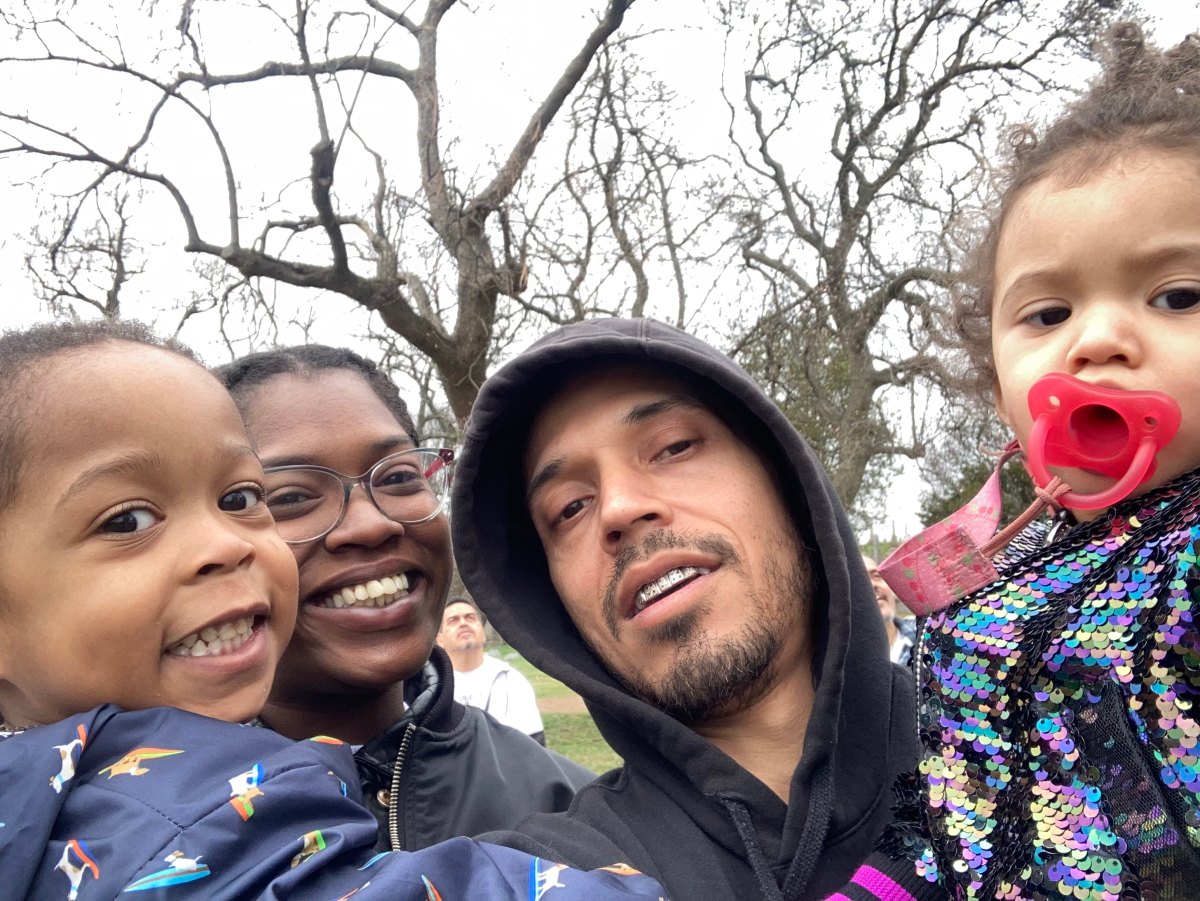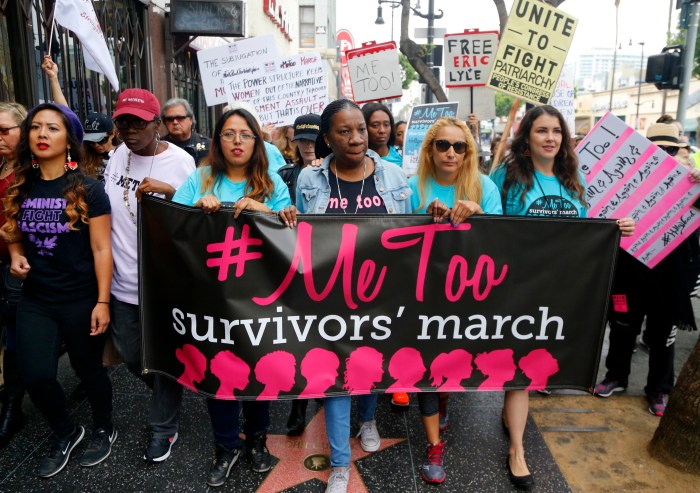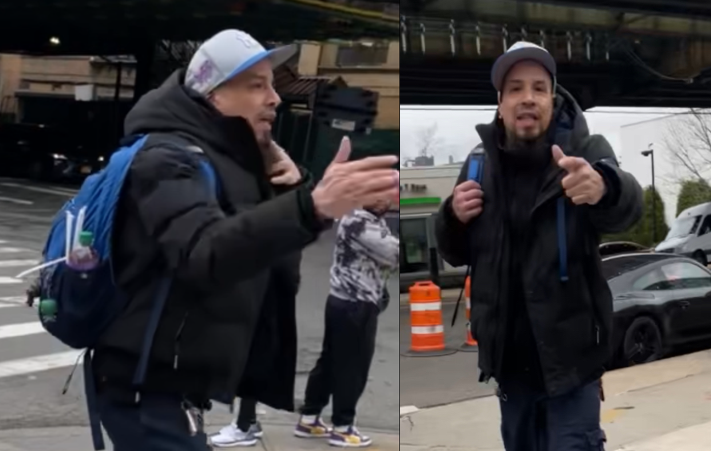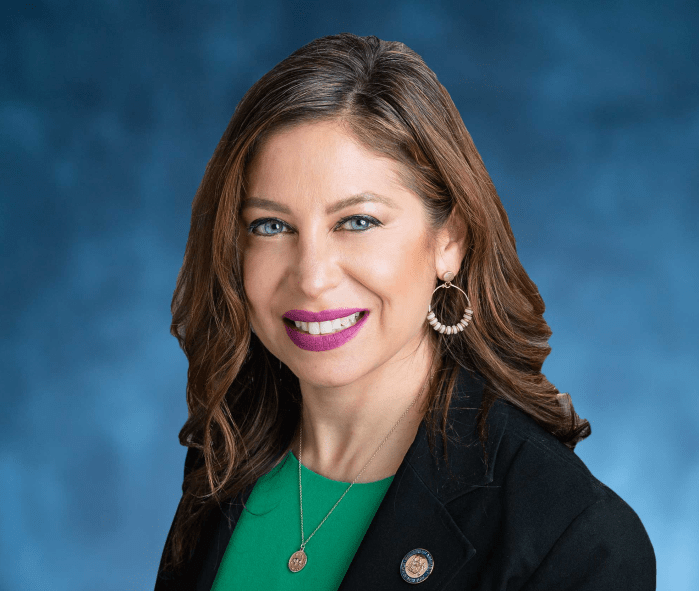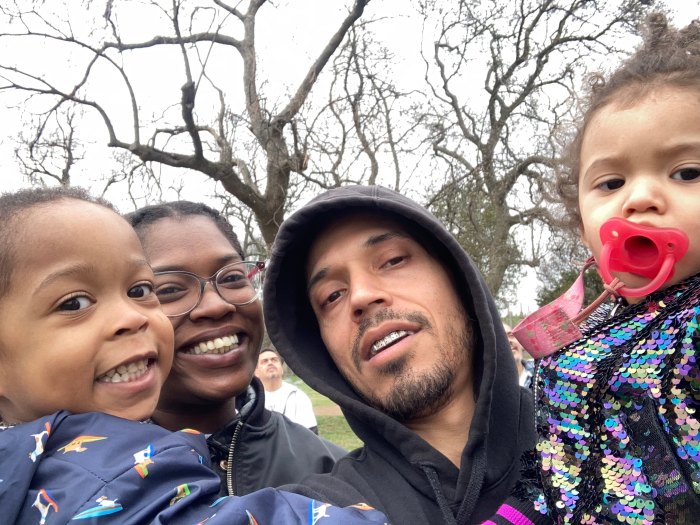INTERVIEWS BY LINCOLN ANDERSON
AND PHOTOS BY REBECCA WHITE | You may have seen the animal-rights protesters outside the new Canada Goose store at 101 Wooster St., between Spring and Prince Sts. If you have, then you definitely have heard them, too. Their deafening demonstrations — which started the day the store opened in mid-November — were driving the block’s residents to distraction. But the activists say they have heard the residents’ complaints — and the warnings by police — and, within the past several weeks have been trying to keep the volume within the legal decibel limit. For a change, they have even held at least one entirely silent, candlelit vigil on Wooster St. But who are these committed activists, really? Beyond the fact that they’re all vegans — not eating or using any animal products — and that some of them dress colorfully, not that much is known about them. And also what does the number 269 — tattooed on their arms and torsos and, sometimes, ears — stand for? Following yet another protest in the bitter cold outside the costly coat merchant last Friday afternoon, nine of them came to The Villager’s office to be interviewed and photographed.
Cooked Quinn’s Goose
Donny Moss
Originally from: Miami
Now lives: Village
Age: 45
Job: Full-time animal-rights campaigner. Runs Web site, TheirTurn.net. (Came to New York to attend Columbia)
The Villager: How did you get involved in animal-rights activism?
Moss: As a constituent of Christine Quinn, I got the mailers, and I saw that she was acting in such a way to suggest that she was trying to preserve St. Vincent’s Hospital, when it wasn’t that way at all. And as City Council speaker, she blocked a vote on every animal-protection bill. I thought I’m going to speak out on a very grassroots level and see if I can make a difference — and I guess I did.
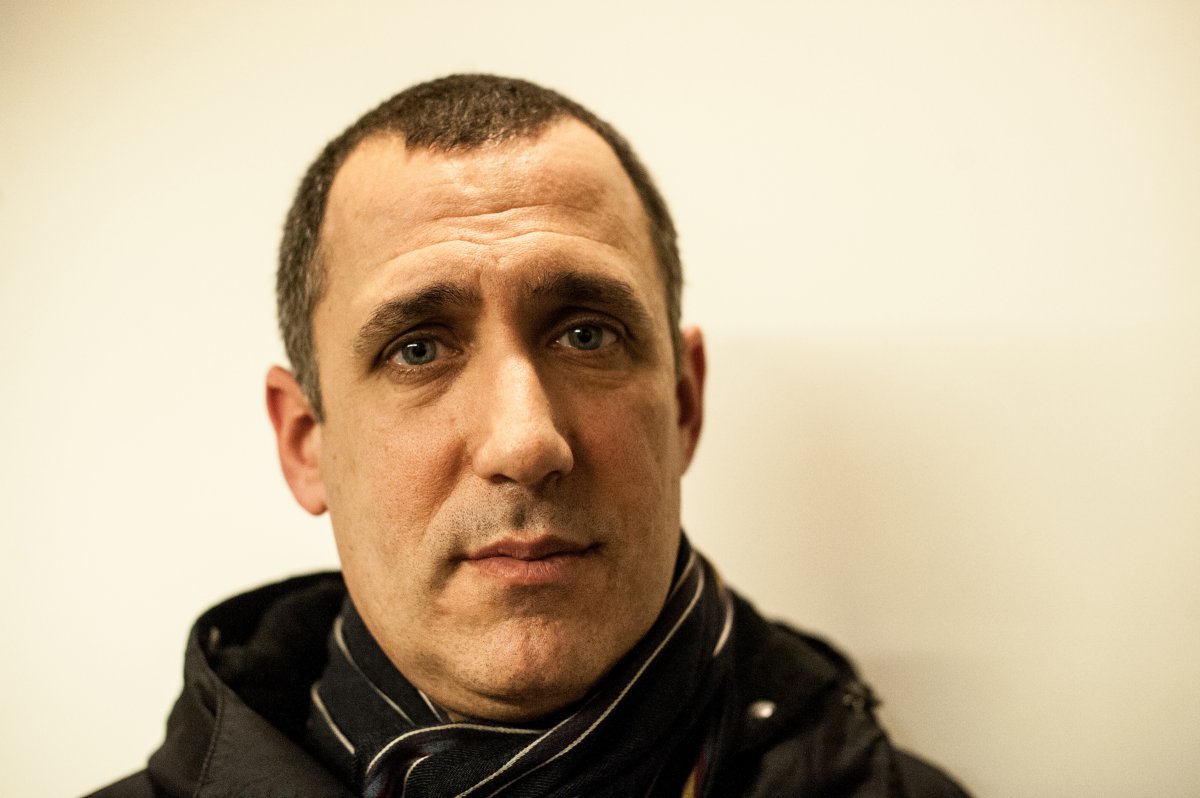
I created a Facebook page called “Defeat Quinn.” And then, when she won her third term, it morphed into a campaign to prevent her from becoming mayor. We all knew she was sort of the mayor’s anointed successor. I was just out there in the streets. And then it grew. And it wasn’t just animal people. It was people who were angry about the term-limits extension, St. Vincent’s, the slush-fund scandal — allocating money to fake budget codes and distributing it in exchange for political favors.
And then it became “Anybody but Quinn,” and there were actual people with money who got involved, and sort of amplified what I was doing on a much smaller scale.
V: Were you an activist before then on animal or political issues?
Moss: Well, gay stuff when I came out of the closet. But over the years, that morphed into…now I’m a full-time animal-rights person.
V: Do you have a job?
Moss: Not anymore. I did P.R. for years. Now I’m a full-time animal-rights reporter / campaigner. I run a Web site, TheirTurn.net, and I do a lot of animal-rights reporting, a lot of video editing, and the videos go viral. I participated in the fur stuff and protests against the circus — but my big campaign now is to demand accountability from the New York Blood Center, which abandoned 66 chimps on islands in Liberia after experimenting on them for 30 years and promising to provide them with lifelong care. I just came back from Liberia a couple weeks ago. They’re on islands with no food or water, and on an emergency basis animal welfare groups are there feeding them. I’m trying to get them to restore the promised funding. They’re all infected with diseases — hepatitis and tropical diseases.
V: Why do you feel the protest against Canada Goose is important?
Moss: People are walking around the city with like this red patch of death [the coat’s arm patch logo] on them. I think some people are aware that they’re wearing dogs — coyotes are wild dogs — who were captured in these horrific steel leg-hold traps. Some aren’t. It’s our job as activists to ensure that people at least have the information and can make an informed decision. Because Canada Goose has such a big share of the fur market in New York City, it’s important to go after them and educate consumers — and hold them accountable for what they’re doing. How many millions of baby coyotes have been orphaned and starved to death because their mothers died after being shot in the head by a trapper for fur decoration? It’s just surreal that this is even a thing in 2017.
V: What’s your ultimate goal in the protest against Canada Goose?
Moss: One is to shut down Canada Goose and send a message to any fur retailer that selling fur is not acceptable in 2017. The other objective in these protests is to educate people about fur. Sometimes it’s effective. We’ve had people unzip the fur trim and give it to us. And you can drop off the fur trim at the Wild Bird Fund; they make blankets out of donated fur for orphaned animals.
I think future generations are going to look back at the images of hundreds of thousands of New Yorkers walking around with fur decoration around their necks and say, “What were they thinking?” Fur is everywhere. The pompoms you see on their heads now, some of them are real fur. You might not see it. But the animal activists are hardwired — we have a trained eye.
Ex-paint thrower
Elizabeth Argibay
Originally from: Queens Village
Now lives: Astoria
Age: 47
Job: Temp administrative assistant
V: When did you become an animal-rights activist and why?
Argibay: It started when I was a teenager in high school. My father really ingrained in us a love for animals. We had bunnies and a husky. I have been vegetarian for the past eight years, but vegan since June. I did things against fur starting when I was a teenager. In the ’80s you could kind of get away with things you shouldn’t — pouring paint, throwing paintballs at the windows at fur places. Like water balloons with red paint.
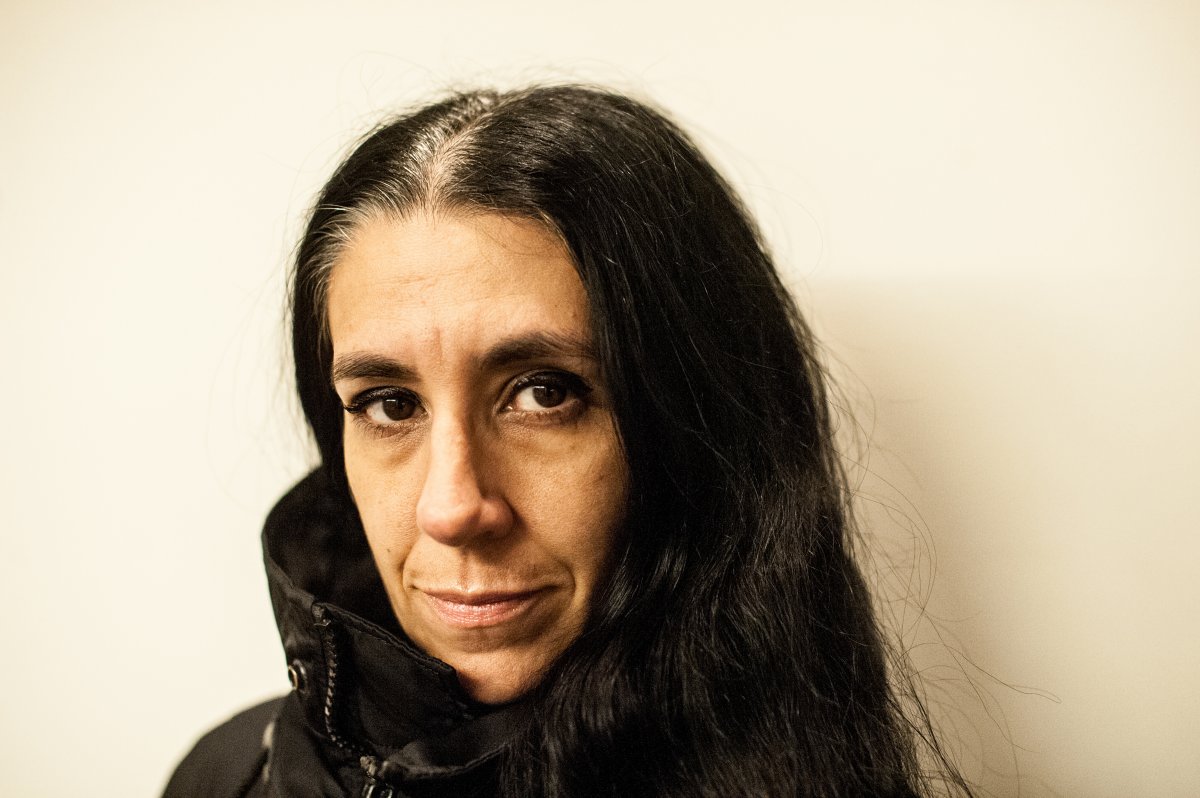
V: Did you actually ever throw paint on someone’s coat?
Argibay: Yes — from a car. I was young! Now I can appreciate that there are better ways, probably if I would have spoken to the person. I see that, in my youth, that was probably obnoxious and frightening to them.
V: Where did you do this?
Argibay: Long Island, in Manhattan, Bloomingdale’s… .
V: How many times did you do it?
Argibay: Maybe a little under a dozen. We threw water balloons from a moving car and it would explode on them. It was like water with the red food coloring. So not actual acrylic paint or like that — it wouldn’t have exploded right. But water does, and it does its damage. I didn’t have any concept of consequence when I was younger, I was just disgusted. I’m disgusted now, too, but I just think there’s a better way to meet people on a more mature playing field.
V: Why do you feel the protest against Canada Goose is important?
Argibay: I think it’s important because Canada Goose has revitalized fur, in a way that most people who would never own fur, they’re buying fur. It’s really a matter of, again, educating these people. A lot of people we’ve met on the street really have been turned off that they now know a coyote or dog has died to be on their hood. Some people are so upset that they’ve zippered the fur right off and given it to us, so we can turn it over to Coats for Cubs, which you can do at any Buffalo Exchange, so it will go to a sanctuary and help other animals rehabilitate. An animal that has been orphaned and is in need of making that connection, will still snuggle that collar, and it helps rehabilitate that animal.
V: What’s your ultimate goal in the Canada Goose protests?
Argibay: I think, really affecting their business, that people will known that this is not something they want to purchase. Canada Goose looked at the U.S.A. as an untapped market, and they figured, “We were really going to really do well here.” And they did. The hipsters, the millennials are buying it, that’s their target audience. Everyone thinks that there’s some cool club you belong to when you wear Canada Goose. How these young college kids can afford it, I don’t even know. The coats run from $900 to $2,000 and more. They don’t know what they’re really wearing. I’d really like to see Canada Goose leave New York. They need to take their Arctic coats back to the Arctic.
Won’t back down
Leonardo Anguiano
Originally from: Brooklyn (“bounced around a lot”: Brownsville, East New York, Sunset Park, Coney Island, Bensonhurst)
Now lives: Bensonhurst
Age: 35
Job: Research librarian, former middle-school science teacher and pharmacologist for Pfizer
V: When did you become an animal-rights activist and why?
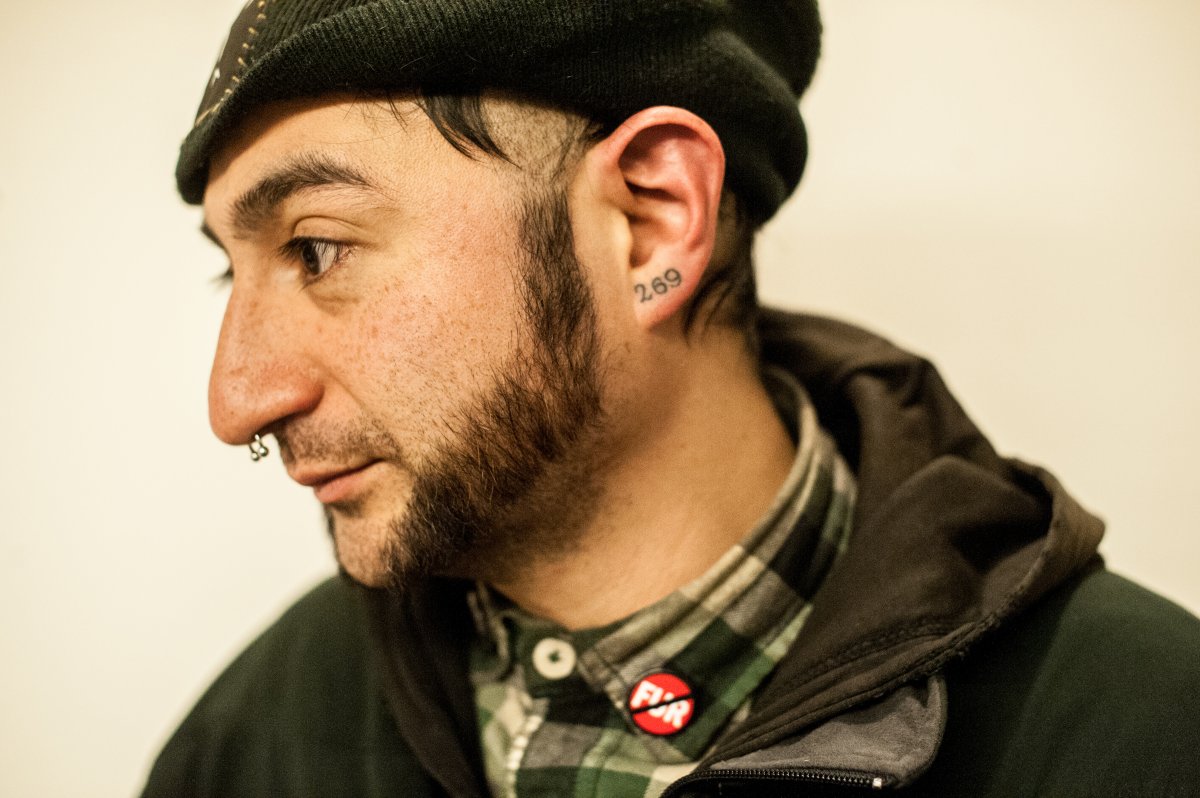
Anguiano: Fur is something I was pretty much against all my life. I was going to protests in the ’90s. But I was still eating meat and wearing leather then. I’ve been a vegan now for almost four years, and a vegetarian for three-and-a-half years before that. I wanted a dog forever. I finally had the time to volunteer at a dog shelter. I fostered a dog who had a very trying first couple of months of his life — he walked his way into my own. I took him to the park and I had that really hippie moment where he’s playing with the other dogs and there were squirrels and birds and I was like, “What am I doing if I’m not seeing them all as one?” Just seeing how cruel people can treat animals. He was from a fighting ring, scars everywhere.
V: Why do you feel the protest against Canada Goose is important?
Anguiano: They were one of the corporations over the last five or 10 years that brought fur back into the mainstream. In the 1990s, fur was heavily contested. There’s all the footage of people throwing paint. But I think people got soft on the issue. And then a company like this crept in, giving celebrities free jackets, so they would be walking billboards. Now you see these other copycat companies that are offering basically the same jacket but with a different logo. But Canada Goose is setting the trend.
V: What’s your ultimate goal in the Canada Goose protests?
Anguiano: At the forefront is the fur. Although we do address the geese and the down — and that’s not anything obviously that any of us condone — it is not at the forefront right now. But at least initially, if Canada Goose were to switch to a faux fur… . I just found out today that Canada Goose does sell faux-fur trim as an option. If that’s something the store on Wooster St. would adopt, that’s moving in the general direction we’d hope for.
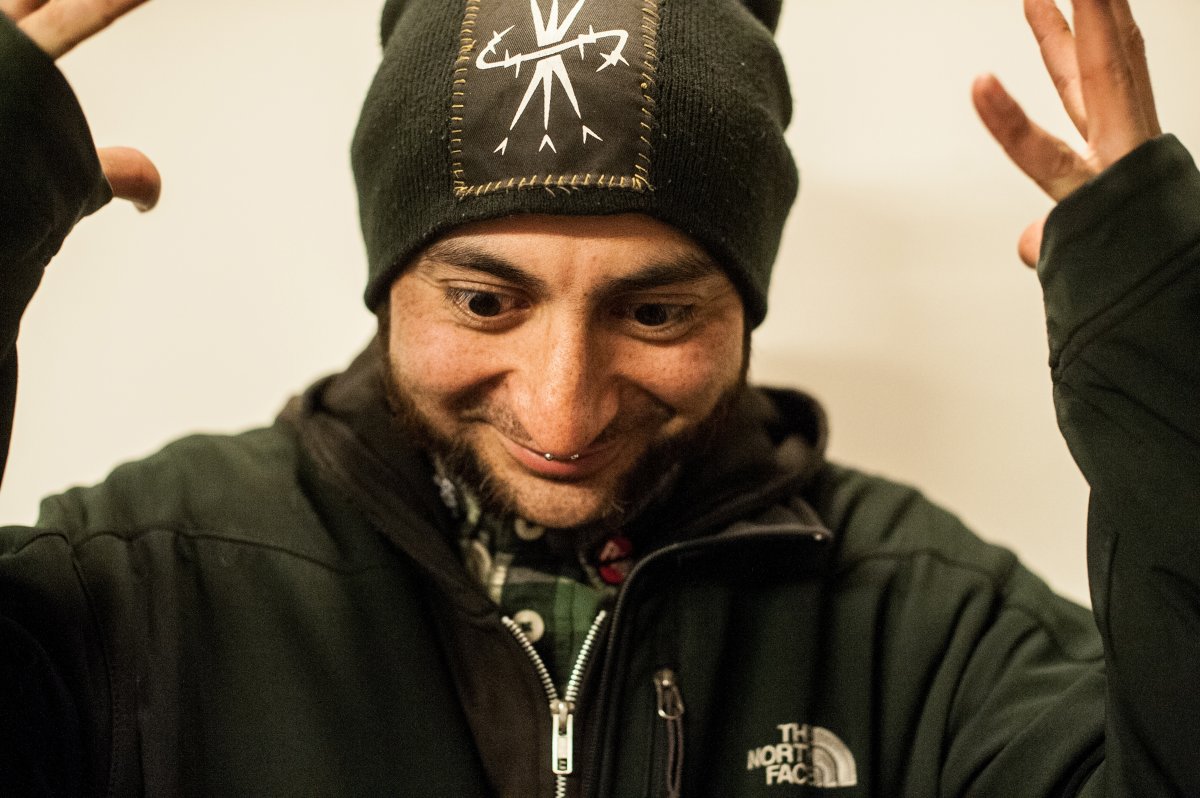
Ultimately, we don’t want people to see animals as products or as fabric. When people are wearing the fur trim on a hood that’s dangling 2 feet from their head “for warmth” — I mean, it’s not even on your head. If Canada Goose or other companies were to go fur free, we’d consider it a stepping stone. We’d still be there for the geese. It’s frustrating to know that a lot of this will not come to pass in our lifetime. But you can set the foundation for someone else to follow: If there was a fur-free world.
V: Have you witnessed cursing at kids or have you cursed at kids during the protests?
Anguiano: I’ve definitely been there. I’ve heard it. I have responded a few times. I’ll admit to it, I have responded with language — but I was responding, in that I was not the one to bring it there. In response to somebody threatening me — yeah, I’m going to respond to you with language.
V: How did people threaten you?
Anguiano: “Get the f— out of my face before I get you out of my face.” Things of that nature. Or “You wouldn’t say this if you were by yourself,” or “You want to take a walk around the block?” You know, street stuff like that. Neighborhoods that I grew up in, like…you respond accordingly. It’s the way that — I don’t want to say how I was raised by my mom— but it’s how I grew up among friends and peers. We have responded to language that was initiated by parents. Somebody would be like, “You’re going to say that in front of my f—ing daughter?” And I’ll say, “You’re going to curse in front of your child?”
V: How long will you keep protesting against the store?
Anguiano: We plan to keep going for the foreseeable future. The winter coats are still going to be on sale. Maybe not at that particular location, but online. And people are a lot more likely to stop and have a conversation when it’s not cold.
Species-ism disrupter
Jennifer Cruz
Originally from: Colombia
Now lives: Queens
Age: 22
Job: Manages a vegan shop
V: When did you become an animal-rights activist?
Cruz: About two years ago. I started doing disruptions with DXE — that’s “Direct Action Everywhere.” I just remember seeing a video. It was these people in California going into a restaurant, and asking if they served dog meat. It was around the time that they did a dog-meat festival in China. They would disrupt their species-ism. You get me? Like why do you sell cows, but not dogs? People who love dogs, eat pigs — but pigs are smart, they feel pain.
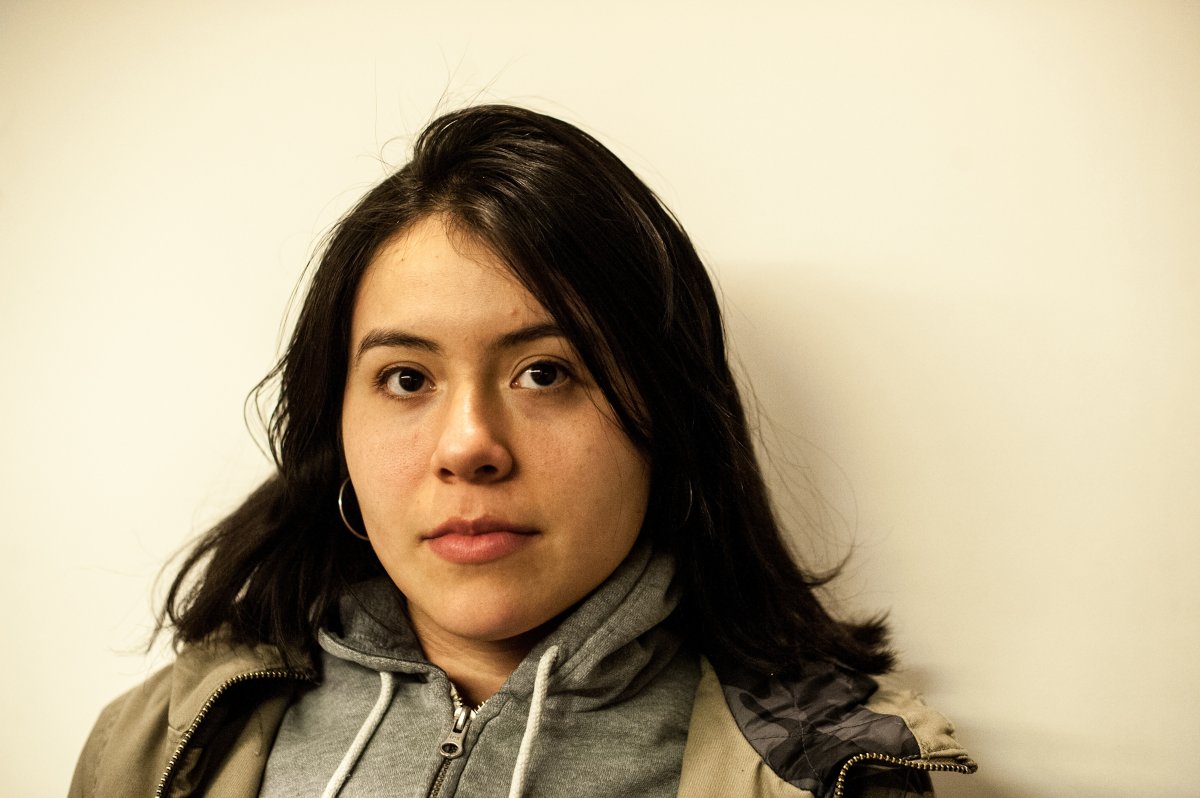
V: What’s your ultimate goal in the Canada Goose protests?
Cruz: To educate people. A lot of people don’t know that this happens.
V: Do you guys wear leather?
Cruz: No, no, no! I don’t buy new leather. What I had, I already got rid of. I had a coat a couple of months ago and it had down. But you know what? I bought it in a thrift shop. It was a $10 coat. But I don’t promote second-hand fur. You get me? And the coat didn’t have a brand. You get me?
The veterinarian
Andrew Kaplan
Originally from: Queens
Now lives: Upper West Side
Age: 52
Job: Veterinarian on U.W.S.
V: When did you become an animal-rights activist and why?
Kaplan: I’ve always been an animal-rights activist. My mind is trained to seeing things that are in need of animal advocacy. As far as actively protesting, I started a couple of years. I became a vegan five years ago.
V: Why do you feel the protest against Canada Goose is important?
Kaplan: Because animal abuse requires animal advocacy. Use of animals for fashion is abuse — there is no such thing as humane killing of animals for fashion. The way that down is harvested — live-plucking — is horribly cruel. They go through six cycles of that, and then it’s not like those animals get a reprieve. Then they become foie gras or duck meat. And the plucking is a painful process. So it’s torturing until they kill them.
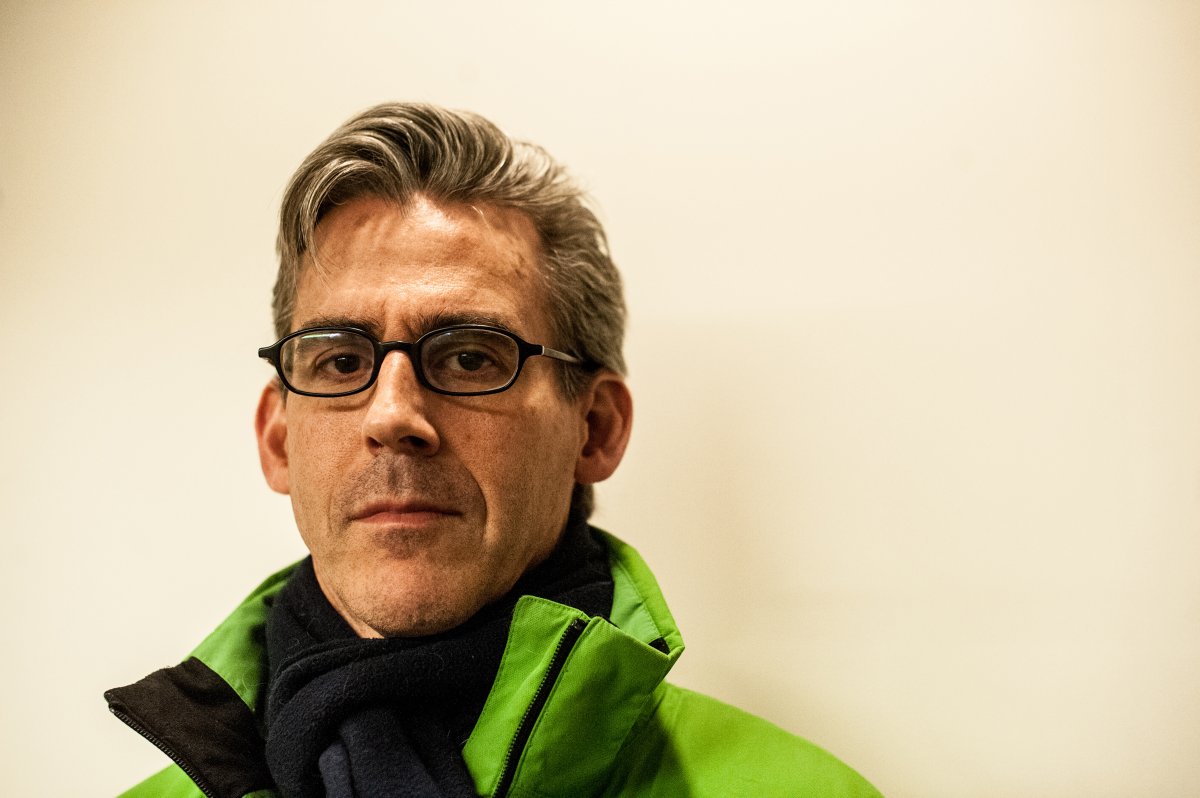
V: It’s painful to geese and ducks to be live-plucked?
Kaplan: I know it is. The nerve supply is in those deep feathers. As a vet, I know those things. So when a bird loses feathers or has a wound in that area that requires removal of feathers, it’s painful. Nerve and blood supply go together — and that’s where the blood supply is.
V: What’s your ultimate goal in the Canada Goose protests?
Kaplan: To see Canada Goose stop selling fur. Down has been around forever, and it has not been protested forever. People think, “It’s just feathers. They can collect them on the ground, and it makes a warm coat.” But I think you cross the line into frivolous fashion when you start putting a real fur trim on a coat that has absolutely no real purpose. They say it blocks the wind. You can wear a balaclava like they do for skiing or a hat that covers your ears. They want something that looks nice on their collar. As a vet, I’m vocal in my neighborhood. Every day, I approach at least five to 15 people that I see on the street walking their dog and say, “Excuse me. Are you aware that the fur on your coat comes from a real coyote? Do you make the connection between the coyote and your dog?” Or I say, “Take your hand and run it across the back of your dog. I’d like you to now do the same thing to your collar. Doesn’t it feel like the same thing? Because it is.” I have very good dialogue with people.
V: What about accusations that the protesters on Wooster St. have been too loud at times?
Kaplan: At times we were, yes. But since the police have directed us otherwise, we have toned it down. Personally, I don’t feel that it’s effective to yell at people, to sling four-letter words at them. Once you get into an argument, you’ve lost them. I’m a believer in the planted seed. Once you’ve gotten the word out and they’ve heard it, that’s where change begins. We discuss this in the protest group. We respect everybody else’s methods. And we learn from each other.
The triathlete
Meredith Schriver
Originally from: New Britain, CT.
Now lives: Upper West Side
Age: 31
Job: Senior court advocate at
a nonprofit criminal justice organization
(Came to New York to attend John Jay
College of Criminal Justice)
V: When did you become an animal-rights activist and why?
Schriver: I became vegan three years ago. It started, honestly, not for the animals. It was more for health reasons. I was training for a big race — the New York City Triathlon — and I was looking at vegan athletes. That started me to be more of a plant-based eater. Then, one day I saw a horrific video of factory farming. I just spent the rest of the day looking at more videos. From that day on, I was 100 percent vegan. But it wasn’t until last year that I felt the need to really get out there and do more of the protesting and make my voice heard.
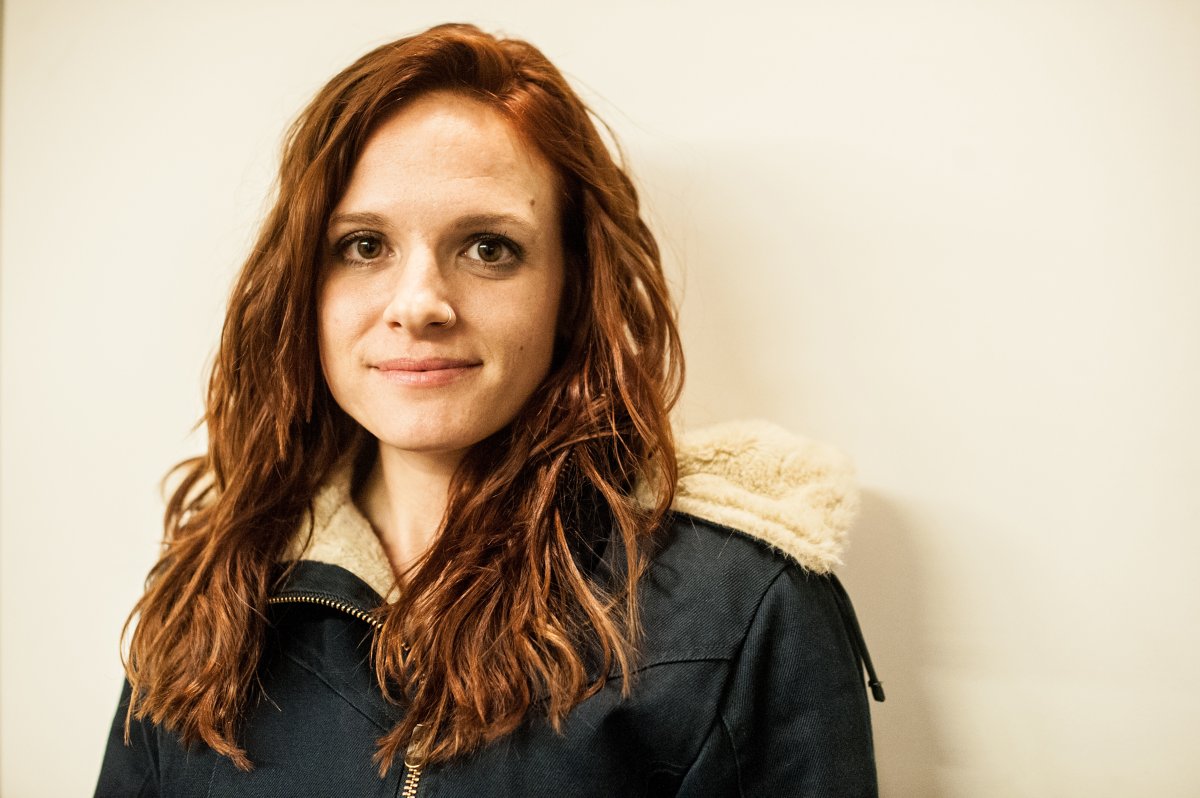
V: As an athlete, do you feel you get enough protein as a vegan?
Schriver: Absolutely. Everyone told me I was crazy. People said, “You won’t be able to finish the race. You won’t get the protein and nutrients that you need.” But I actually found like I had more energy. I started running faster. It felt like less recovery time between big workouts.
V: Why do you feel the protest against Canada Goose is important?
Schriver: Because it’s Canada Goose’s flagship store in the United States. I think it’s so important to educate people about how inhumane they are, how they trap the animals and how they get the down for the coats. The majority of the people really don’t know that they’re wearing these dead canines around their neck. They think it’s fake.
V: What’s your ultimate goal in the Canada Goose protests?
Schriver: I want to get the word out there. I want to educate as many people as possible. There’s so much cruelty that goes into every single coat. And I’d like to believe the majority of people don’t want to pay for something that’s so inhumane.
V: How long will you keep protesting against the store?
Schriver: As long as it takes. It’s not going to stop when winter’s over. They’re still going to be there with their spring line [much of which contains down]. I don’t think the down is humanely obtained.
Defense attorney
Nathan Semmel
Originally from: Grew up on E. Third St., in Stuyvesant Town and Long Island
Now lives: Upper West Side
Age: 46
Job: Criminal defense attorney
V: When did you become an animal-rights activist and why?
Semmel: It started really with fundraising on behalf of Farm Sanctuary [the Upstate animal-rescue group]. They’re a lot more than rescue — they do outreach, legislation. At the time I was vegetarian. I learned a lot about factory farming. In terms of protesting and street activism, I would say I started within the past year. I went to New York Law School in Tribeca. I was a prosecutor in the Manhattan District Attorney’s Office for almost six years, and then switched sides. I’ve been doing defense work since 2004. In a lot of ways, there are similarities to animal activism — because there’s a feeling of the deck being stacked against who you’re representing, whether it’s people or animals. There’s a feeling of trying to do what’s right. I think the difference is, with my job, many of the people I represent have committed crimes, they have done wrong. That doesn’t necessarily mean they’re bad people. Or maybe they haven’t done everything they’re accused of doing. But in animal advocacy, who we advocate for haven’t done anything wrong at all.
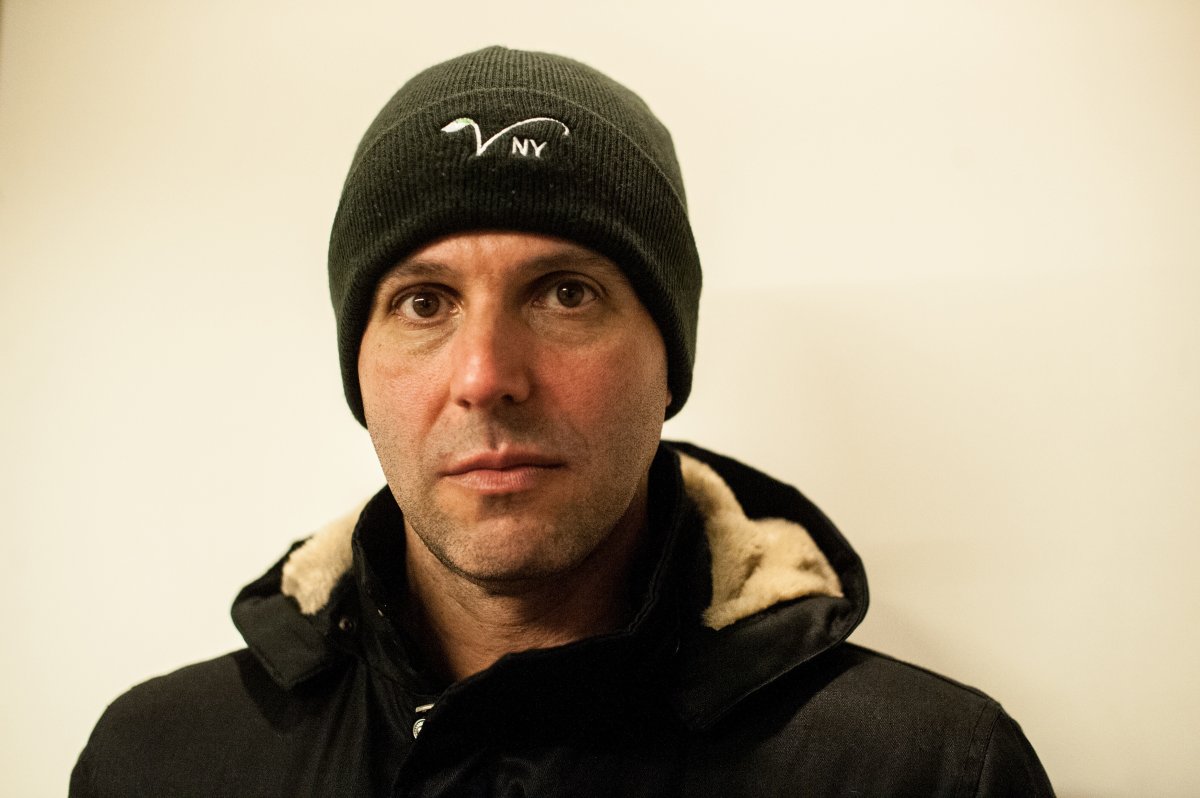
V: Why do you feel the protest against Canada Goose is important?
Semmel: Long before I went vegan, the idea of wearing fur was just appalling to me. I remember in the 1970s there was a TV commercial, like, “You don’t have to pay a million to look like a million,” with a woman coming out of a store in a full-length fur coat. But then you didn’t see fur forever. And then it started to come back, and now you see the fur trim — everywhere. That damn patch, that Canada Goose patch. They hide behind this story that “We don’t use fur farms. We don’t use live-plucked goose down.” But whether they use fur farms or not, the methods are barbaric. They can never guarantee that the feathers are not live-plucked. There are undercover videos from all over from places that swear that “this is humane,” that show that this is being done.
V: What’s your ultimate goal in the Canada Goose protests?
Semmel: To shut them down. But I recognize the fact that it’s a behemoth company. It will take a lot of awareness. That so many people don’t know [about the fur]. If you don’t know and you like the look and you want the status — because that’s really what the patch is all about, is the status, because everybody knows how expensive these coats are — so people want other people to know how much they are able to pay for that coat.
The ultimate goal is to shut the fur trade down, to stop Canada Goose. It would be wonderful if the people of Wooster St., of Soho, if their gripe was with the store and its practices. We are the response to Canada Goose being there — not the other way around.
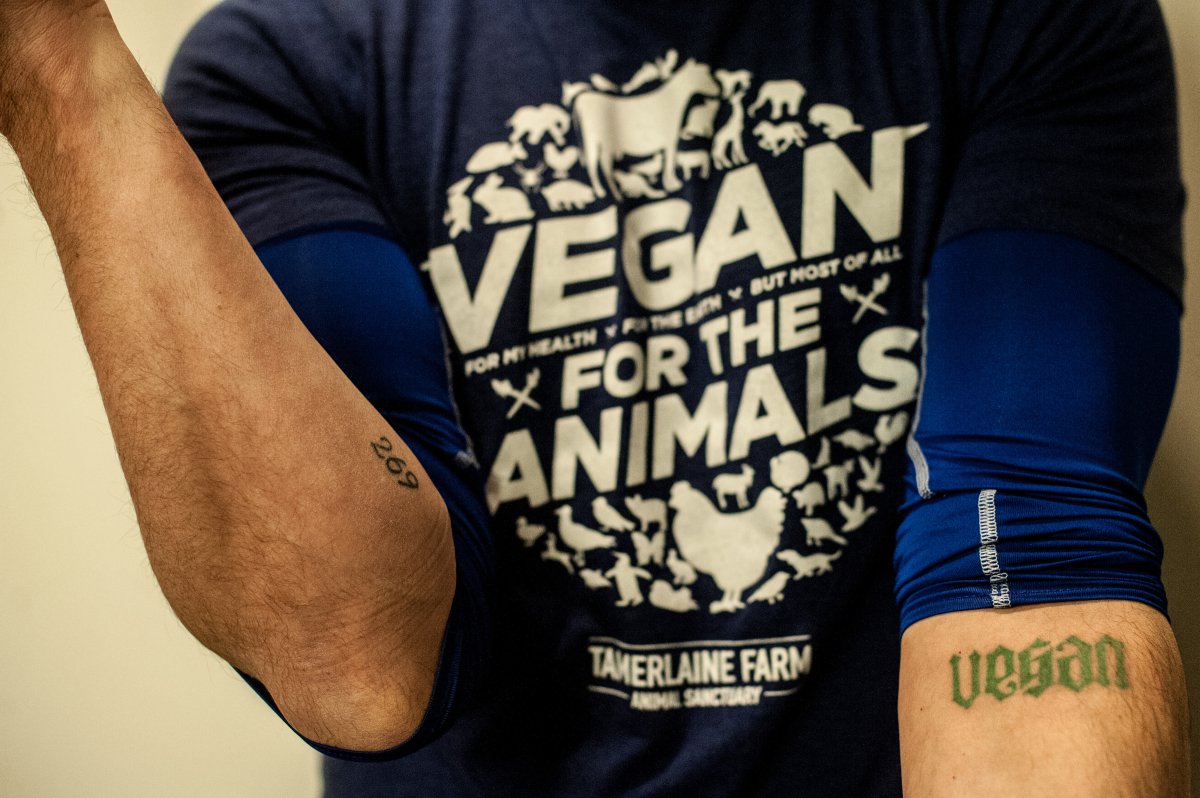
V: How long will you keep protesting against the store?
Semmel: I think, until it stops. Every single day we’re out there, we’re raising awareness. Even if the shoppers don’t walk off that line that day, they may go home and they may research it. They may look online and see the video of what Canada Goose does to animals.
V: What does that tattoo “269” on your inner arm mean?
Semmel: “269” is a calf that was born into an Israeli dairy farm. Like all others destined for slaughter, he had a tag number pierced into his ear. As an all-white calf, 269 stood out. He became a symbol of the animal-rights movement. His life was ultimately saved near his slaughter day. But by tattooing his number — the founders of the movement and hundreds of others are actually branded — we show our solidarity with the victims of the animal holocaust all around the world, remembering to never forget. Annually, more than 150 billion animals are murdered worldwide. People say, “I could give up meat. I can’t give up cheese.” What people don’t realize is the dairy industry is the genesis of it all, in a lot of ways. Because the male calf has no value in the dairy industry. So the male calf gets sold off to a veal farm, where it lives for one to three months in a crate where it can’t move, so the muscles don’t develop. That’s the appeal of veal, it’s tender. So dairy leads to veal.
Morrissey disciple
Andrew Ensenat
Originally from: Miami
Now lives: Bushwick
Age: 27
Job: Graphic designer in DUMBO
V: When did you become an animal-rights activist and why?
Ensenat: At age 18. I think it all has to do with the guy I worship. His name is Morrissey. He’s a big animal-rights activist. At age 13, I picked up his album “Maladjusted,” and later I bought The Smiths album “Meat Is Murder.” And I started reading the lyrics. Morrissey is badass. [He shows his cell phone; Morrissey is on both its cover and screen background.] So I became vegetarian at age 18. It’s never been the same. My family thought it was a phase. Because I’m Cuban-American, so our typical staple foods are pork, meat, chicken
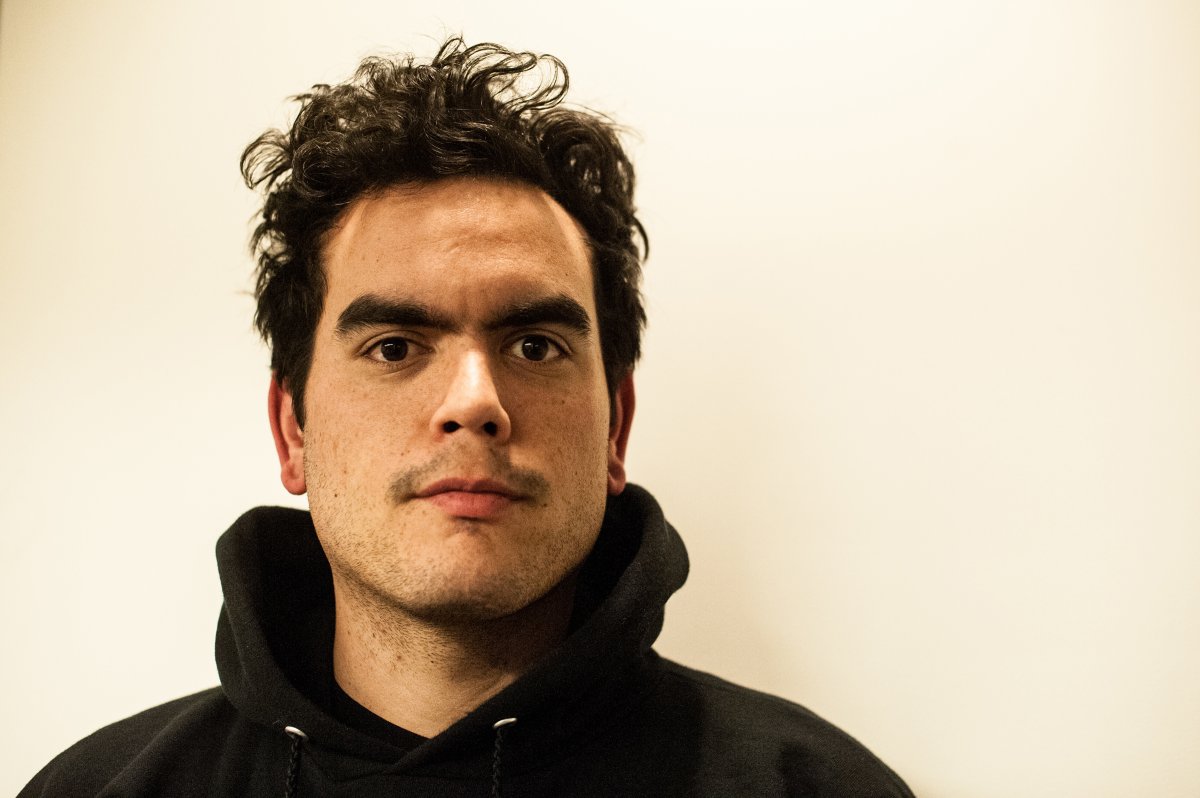
and seafood. So I decided to get a new diet. I went to Florida State University and met likeminded people and just read more. My first protest was at Ringling Bros. & Barnum Bailey Circus in Miami when I was 18. I got myself more involved through the grapevine a.k.a. Facebook. I demo’d outside The Kooples store in Soho — it’s like a designer store but they use animal byproducts for their clothing. This stuff still affects me on a personal and emotional level. I wake up angry, I go to sleep angry. I was leafletting in Union Square yesterday for a nonprofit group called Mercy for Animals.
V: Why do you feel the protest against Canada Goose is important?
Ensenat: That begs the question: Why isn’t it important? These are living entities. These animals want the same things you want: To go home to their family, to live in this world, to roam free, to eat grass, to at least feel grass on their legs, to breathe the air that we breathe. And Canada Goose doesn’t give a s—. They see these animals as profit.
V: What’s your ultimate goal in the Canada Goose protests?
Ensenat: Well, this Thursday, Canada Goose is going public [making an Initial Public Offering of its stock]. There’s going to be a demonstration with PETA [People for the Ethical Treatment of Animals]. The protesters are going to dress up in suits with fox masks. So the ultimate goal, for all of us, is to stop Canada Goose. Just stop everything.
Stickers got him
Alex Reyes
Originally from: Bushwick
Now lives: Bushwick
Age: 25
Job: Dog walker
V: When did you become an animal-rights activist and why?
Reyes: I started in late December, when I realized that people were protesting against the Canada Goose jackets. I found Rob Banks. I followed him on Instagram. And then I found him in person by coincidence in real life. He was stickering on Bedford Ave. The stickers said, “This Is Your Fur Trim,” with an image of dead coyotes.
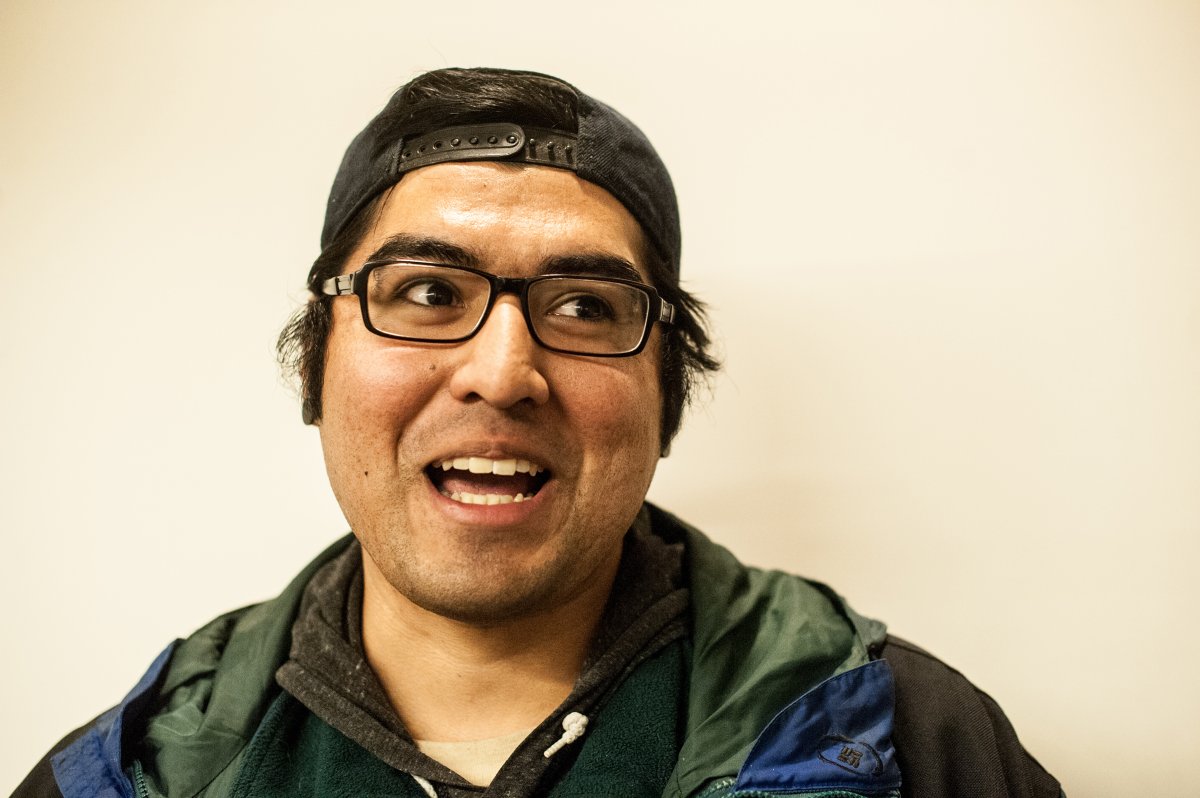
V: Why do you feel protesting Canada Goose is important?
Reyes: A lot of people don’t realize what they’re wearing. It’s just trendy. When you’re protesting, you’ll come across some people who say, “It’s disgusting. Take it off me.”
V: What’s your ultimate goal in the Canada Goose protests?
Reyes: I think it’s to get that store out of Soho. And make a statement, so that all the fur stores would notice this and see that people are not with that.
V: Just curious — so, do you walk like eight dogs together all at the same time?
Reyes: No, only one at a time. But I walk five dogs a day.










